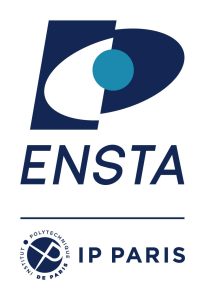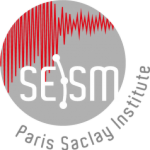 |
 |
CEA Saclay ENSTA Paris Institut Polytechnique de ParisPhD (3 Years) |
| Seismic analysis of the soil-foundation interface: Physical and numerical modeling of global rocking and local up-lift | ||
Location: CEA | ENSTA Paris | Institut Polytechnique de Paris
Supervision
Prof. HDR Jean-François Semblat (ENSTA, IP-Paris, IMSIA),
Dr. Reine Fares (Laboratoire d’Etudes Mécaniques Sismique, CEA Paris Saclay, UniversitéParis Saclay)
Dr. HDR Maria Paola Santisi d’Avila (Polytech’Lab, UPR 7498, Polytech’ Nice Sophia)
Starting date: 01/10/2024
Duration: 3 Yeaes
Contat: Dr. Reine Fares (Laboratoire d’Etudes Mécaniques Sismique, CEA Paris Saclay, UniversitéParis Saclay) reine.fares@cea.fr
Keywords: Soil-structure interaction – Rocking – Computational structural mechanics -Shaking Table – Finite element analysis.
Context
The effect of soil-structure interaction, currently not taken into account in the seismic design of civil engineering structures and their foundations in professional practice, could influence the design of load-bearing structures. Soil-structure interaction effects are linked to inertial interaction (forces in the soil-structure system) and kinematic interaction (influence of the soil-foundation contact surface) (Semblat and Pecker, 2009). A more precise analysis of these two aspects requires three-dimensional (3D) numerical modeling of the soil-foundation-structure system and its temporal response, the definition of relevant constitutive laws for materials in the nonlinear plastic regime and the characterization of their mechanical properties. This makes it possible to consider directly the reduction in soil bearing capacity resulting from loss in soil strength, and the modification over time of the seismic action at the base of the structure. In 3D soil-structure interaction models, the connection between the soil and the embedded part of the footing structure is generally considered to be rigid, and the effects of friction and up-lift are neglected.
A series of tests on the CEA’s Azalée shaking table in October 1999 (CAMUS IV, Combescure and Chaudat, 2000) demonstrated the existence of complex phenomena of structural detachment from the ground during seismic shaking. This involved a 1/3 scale model of the structure resting on a sandbox, anchored to the shaking table. Tests revealed up lifting at the foundation level, leading to energy dissipation, as well as significant residual settlement and rotation. Other studies have also highlighted the significant impact of rocking and consequent up-lift at the soil-foundation interface on the seismic response of the structure (Abboud, 2017; Chatzigogos, 2007; Gajan et al., 2021; Gazetas and Apostolou, 2004), as well as the loss of elasticity and nonlinear behavior of the soil, which increases permanent settlement (Pelekis et al., 2021). However, few studies in the literature evaluate the effect of the roughness of the soil-foundation interface and propose contact laws to model settlement and up lifting during rocking of the structure under seismic action.
In the context of interaction effects, understanding the parameters influencing the behavior of the soil-foundation interface and modeling the contact surface remains a challenge. A combined experimental and numerical approach will be developed in the proposed thesis.
The main aim of this thesis is to enable the transition from the modeling of local effects (friction, up lifting) to the simulation of the structure’s global response (rocking, settlement, sliding). This is achieved by identifying the experimentally measurable physical parameters that manage the phenomenon locally and, at the same time, the global dynamic parameters altered by interaction effects (change in effective height).
On the one hand, an experimental campaign will be conducted on Vesuve, a single-axis vibrating table. The experimental model will consist of a rigid box containing the reference soil and a structure placed on the surface. The behavior of the system will be monitored using pressure sensors, LVDTs, flexiforce, accelerometers, etc. In addition, a numerical modeling method will be proposed and validated by comparison with experimental results. Finally, a numerical strategy will be proposed for different study cases. The output parameters obtained by the numerical simulations will be correlated with the measured parameters in order to optimize their calibration on the one hand, and to validate the numerical approach on the other.
Objective and work program
Modeling the soil-foundation contact interface involves determining a contact law suitable to the physical phenomena under consideration. Coherent modeling of behavior requires the coupling of experimental observation and numerical methods. The twofold challenge of implementing laboratory tests and numerical modeling has now been identified:
- The first challenge will be to select a set of local physical parameters that influence the response of the soil-foundation interface and have a direct impact on the overall response of the structure. Another important aspect will be to obtain reliable measurements of these physical quantities using available measurement technologies. To this end, a numerical simulation campaign will be launched, including a sensitivity analysis of soil properties, structure geometry, added mass distribution and soil-foundation interface roughness. These simulations will be used to design the physical models, anticipate the various phenomena and precisely define the measuring equipment to be used. This phase will be followed by the actual implementation of these experimental models. Preliminary tests will be necessary to finalize the experimental protocol guaranteeing the reliability and repeatability of the tests. Finally, free-field tests and tests with the underlying structure will be carried out under monotonic horizontal and vertical loading, followed by dynamic loading. Hostun sand will be used as the reference soil for these studies. The latter was the subject of small- and large-scale experimental campaigns set up as part of Zhehao Zhu’s thesis, carried out at CEA and Ecole des Ponts-ParisTech (Zhu, 2022). The behavior of Hostun sand has already been finely characterized under static and dynamic loading, in the case of dry and saturated soil (Gobbi et al., 2022).
- The second challenge is to implement the strategy of numerical modeling of the soil-foundation interface and direct simulation of the overall response of the structure, taking into account local interaction effects at the interface. The numerical response of the structure will depend on the choice of rheological models adopted and the contact law developed for the soil-foundation interface. This contact law will be calibrated using measurable physical parameters to increase its reliability.
The results of the numerical simulations and their interpretation will be applied to realistic case studies to meet industrial needs. The up lifting phenomenon will also be correlated to the amplitude and frequency content of the seismic motion. The input experimental database and the output numerical database will be used to calibrate the parameters, validate the approach and deduce simplified relationships. At the end of this thesis, an experimental database will be made available for validation or to define the validity domain of other engineering tools, notably the equivalent linear method used in design studies.
Refrences
Abboud, Y., 2017. Développement d’un macroélément pour l’étude des fondations superficielles sous charge sismique, IFSTTAR/Université Paris-Est
Chatzigogos, C., 2007. Comportement sismique des fondations superficielles: vers la prise en compte d’un critère de performance dans la conception. Ecole Polytechnique X.
Combescure, D., Chaudat, T., 2000. ICONS European program seismic tests on R/C wallswithuplift; CAMUS IV specimen. ICONS Project. CEA, Direction des Réacteurs Nucléaires Report.
Gajan, S., Soundararajan, S., Yang, M., Akchurin, D., 2021. Effects of rocking coefficient and critical contact area ratio on the performance of rocking foundations from centrifuge and shake table experimental results. Soil Dynamics and Earthquake Engineering 141, 106502.
Gazetas, G., Apostolou, M., 2004. Nonlinear soil–structure interaction: foundation uplifting and soil yielding, in: Proceedings Third UJNR Workshop on Soil-Structure Interaction. pp. 29–30.
Gobbi, S., d’Avila, M.P.S., Lenti, L., Semblat, J.-F., Reiffsteck, P., 2022. Liquefaction assessment of silty sands: Experimental characterization and numerical calibration. Soil Dynamics and Earthquake Engineering 159, 107349.
Pelekis, I., McKenna, F., Madabhushi, G.S.P., DeJong, M.J., 2021. Finite element modeling of buildings with structural and foundation rocking on dry sand. Earthquake Engineering & Structural Dynamics 50, 3093–3115. https://doi.org/10.1002/eqe.3501
Semblat, J.F., Pecker, A., 2009. Waves and Vibrations in Soils: Earthquakes, Traffic, Shocks, Construction Works, IUSS Press, Pavie, Italie, 500 pages.
Zhu, Z., 2022. Influence des particules fines sur les propriétés de liquéfaction des sables. Application à la réponse à la liquéfaction d’une colonne de sol sur table vibrante [WWW Document]. http://www.theses.fr. URL http://www.theses.fr/s207127 (accessed 9.1.22).
Application profile the selected candidate should have a strong background in soil mechanics, finite elements modeling and dynamic behavior of structures. Additional the finite element codes Cast3M and OpenSees would be most appreciated.
Application procedure Please submit electronically (in PDF format): (1) a detailed resume, (2) a motivation letter, (3) at least one reference letter. Applications must be sent within a single compressed folder (named “NAMESurname.zip/rar/…”) to the address mail reine.fares@cea.fr
